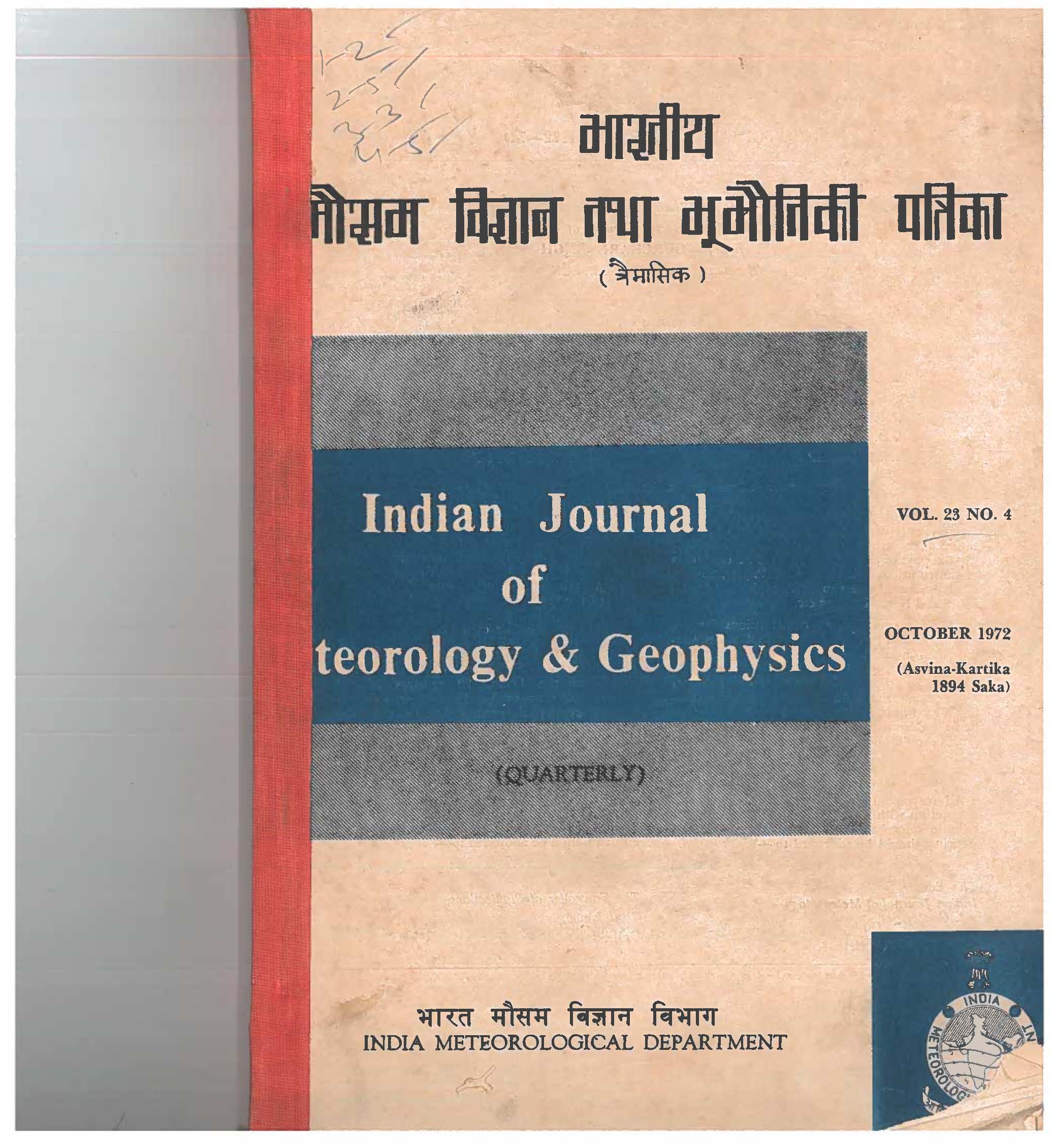Anantnag earthquakes (February to April 1967)
DOI:
https://doi.org/10.54302/mausam.v23i4.5308Abstract
A study has been undertaken of the Anantnag earthquake of 20 February 1967 and 80 aftershocks which followed the main shock upto April 1967. The results indicate that the main shock occurred at a depth of about 25 kilometres on a reverse fault striking N 330°E and dipping at an angle of 57° towards N 240oE, having motion along the direction of dip. The after shocks were also located on the same fault plane at depths varying between 15 and 35 kill. The decay of the sequence of aftershocks can be represented fairly accurately by the relation : N(t)=15/(I-O.5) where, t is in days and N (t} is the number of aftershocks after t days. The aftershock sequence reveals a 'b' value of 0.6 as compared to 1.0 obtained in the case of highly seismic areas, which can be attributed to the greater depth of the shock and also to a lower seismogenic potential of the area.
The total energy released in the aftershocks has been found to be 0.47 times the energy released in the mam shock inspite of the fact that the stored creep strain was 2.3 times that of the elastic strain showing that only 20 per cent of the creep energy was radiated as elastic energy, the remaining being dissipated as heat.
The travel time data of the various crustal phases recorded at near stations indicates that both the Granitic and the Basaltic layers in the region are about 29 km thick i.e., the average depth of the Moho is about 58 km, a result consistent with the authors earlier conclusion of nearly 60 km from the data of surface wave dispersion.
Downloads
Published
How to Cite
Issue
Section
License
Copyright (c) 2022 MAUSAM

This work is licensed under a Creative Commons Attribution-NonCommercial 4.0 International License.
All articles published by MAUSAM are licensed under the Creative Commons Attribution 4.0 International License. This permits anyone.
Anyone is free:
- To Share - to copy, distribute and transmit the work
- To Remix - to adapt the work.
Under the following conditions:
- Share - copy and redistribute the material in any medium or format
- Adapt - remix, transform, and build upon the material for any purpose, even
commercially.



